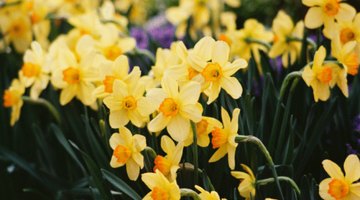Knowing when to capitalize a word and when not to is a confusing issue in typing reports and other forms of written communication. Flowers actually have three names, the genus, species and cultivar. There is also the common name, which sometimes is the same thing as the genus name, as is the case with Euonymus.
Sentence Format
Always capitalize the first word in every sentence, even if it normally does not require capitalization. For instance, "Daffodils are one of the first signs of spring." In this case, "daffodils" requires a capital letter. In the sentence, "One of the first signs of spring is the appearance of daffodils," it does not require capitalization.
Titles
Capitalize the first and last word in titles, no matter what part of the flower the word is. All other important words except for articles, prepositions and conjunctions need capitalization in the title; thus, this includes flower names.
Genus and Cultivar
Always capitalize the genus name of a flower and the cultivar. The cultivar needs single quotation marks surrounding it, as well. For instance, Echinacea purpurea ‘Magnus'; Echinancea is the genus name, purpurea is the species name, and 'Magnus' is the cultivar. The common name for the plant is purple coneflower, which does not require capitalization if used anywhere in the sentence other than the first word (unless it is in a title).
Related Articles
Writer Bio
Chelsea Fitzgerald covers topics related to family, health, green living and travel. Before her writing career, she worked in the medical field for 21 years. Fitzgerald studied education at the University of Arkansas and University of Memphis.











